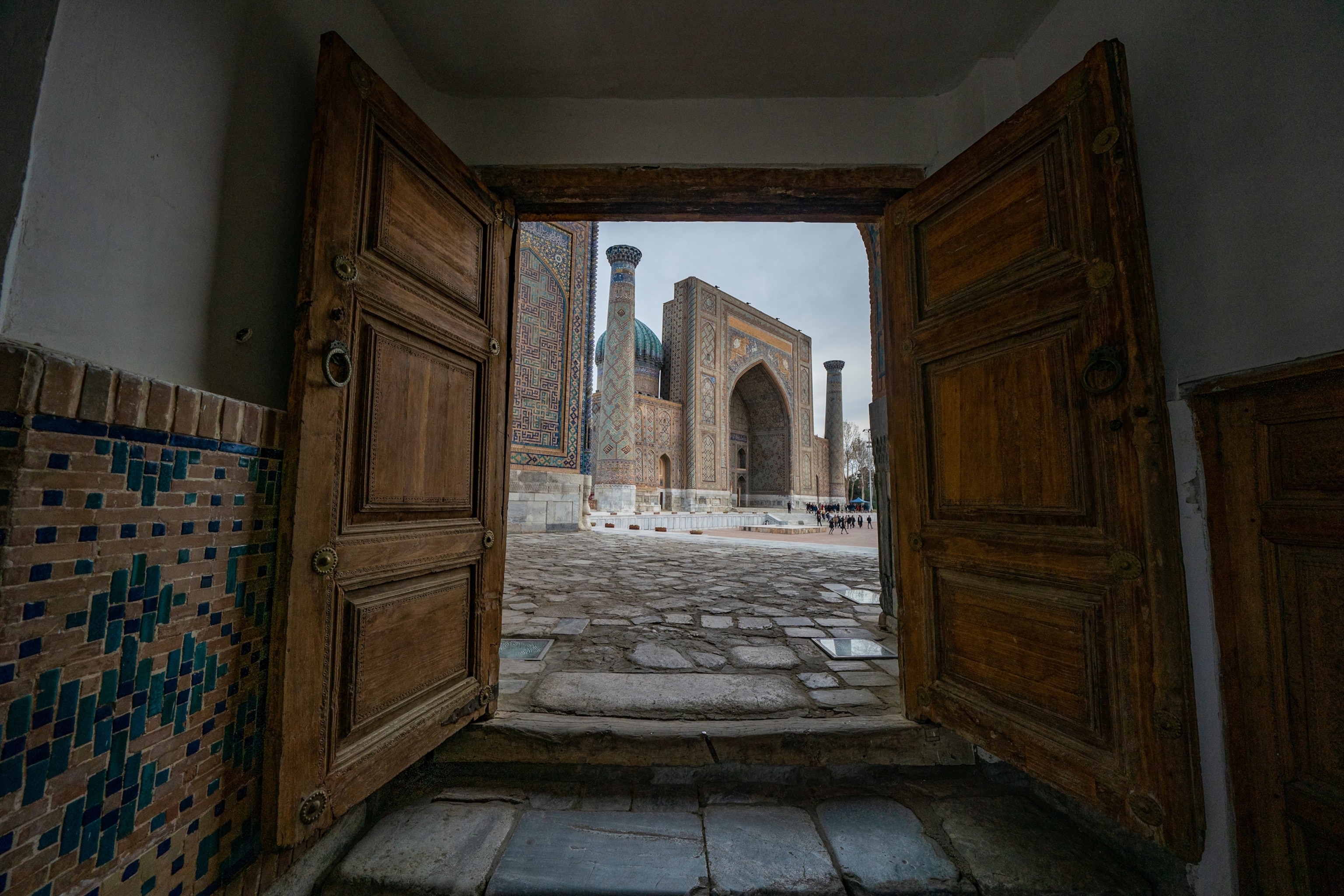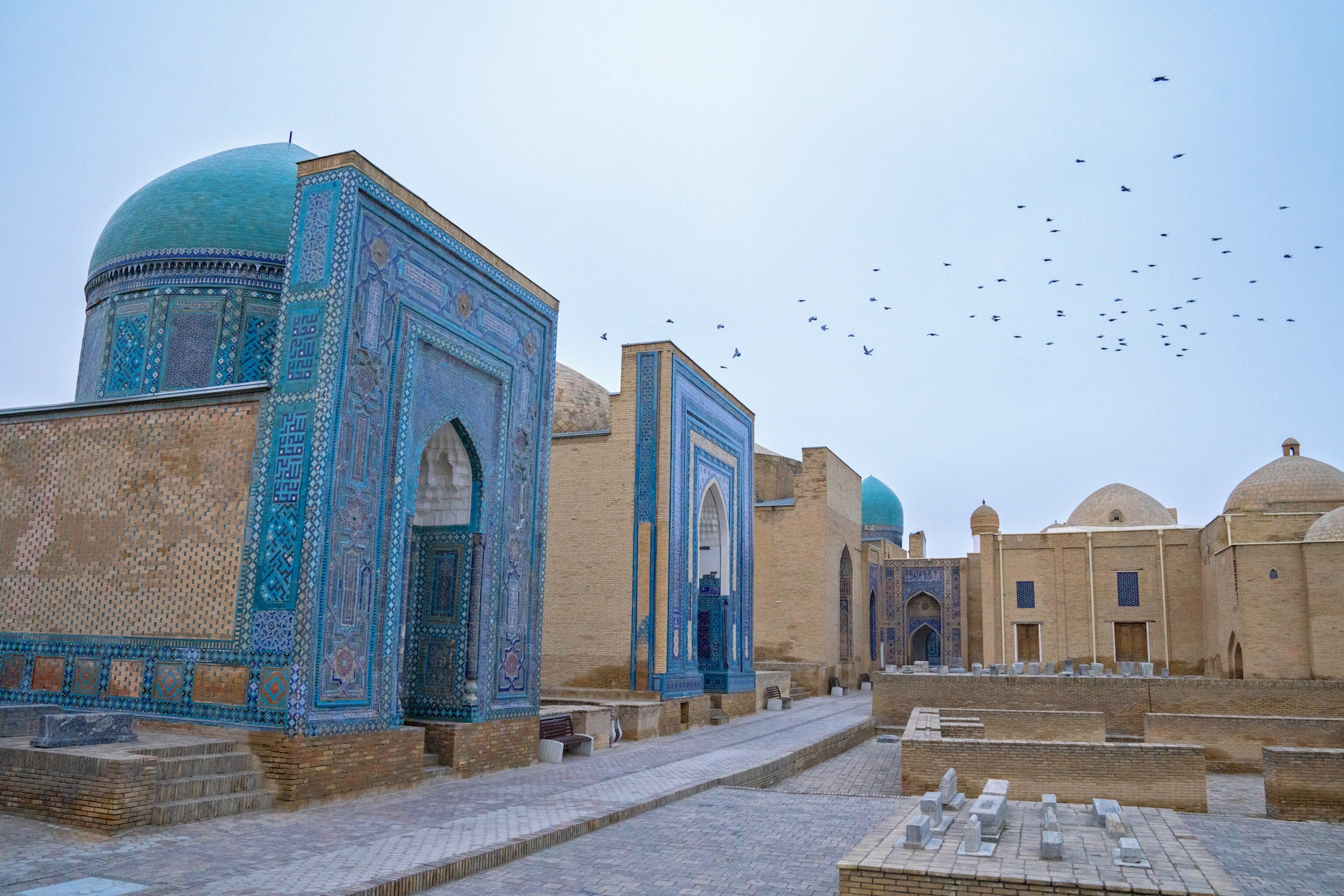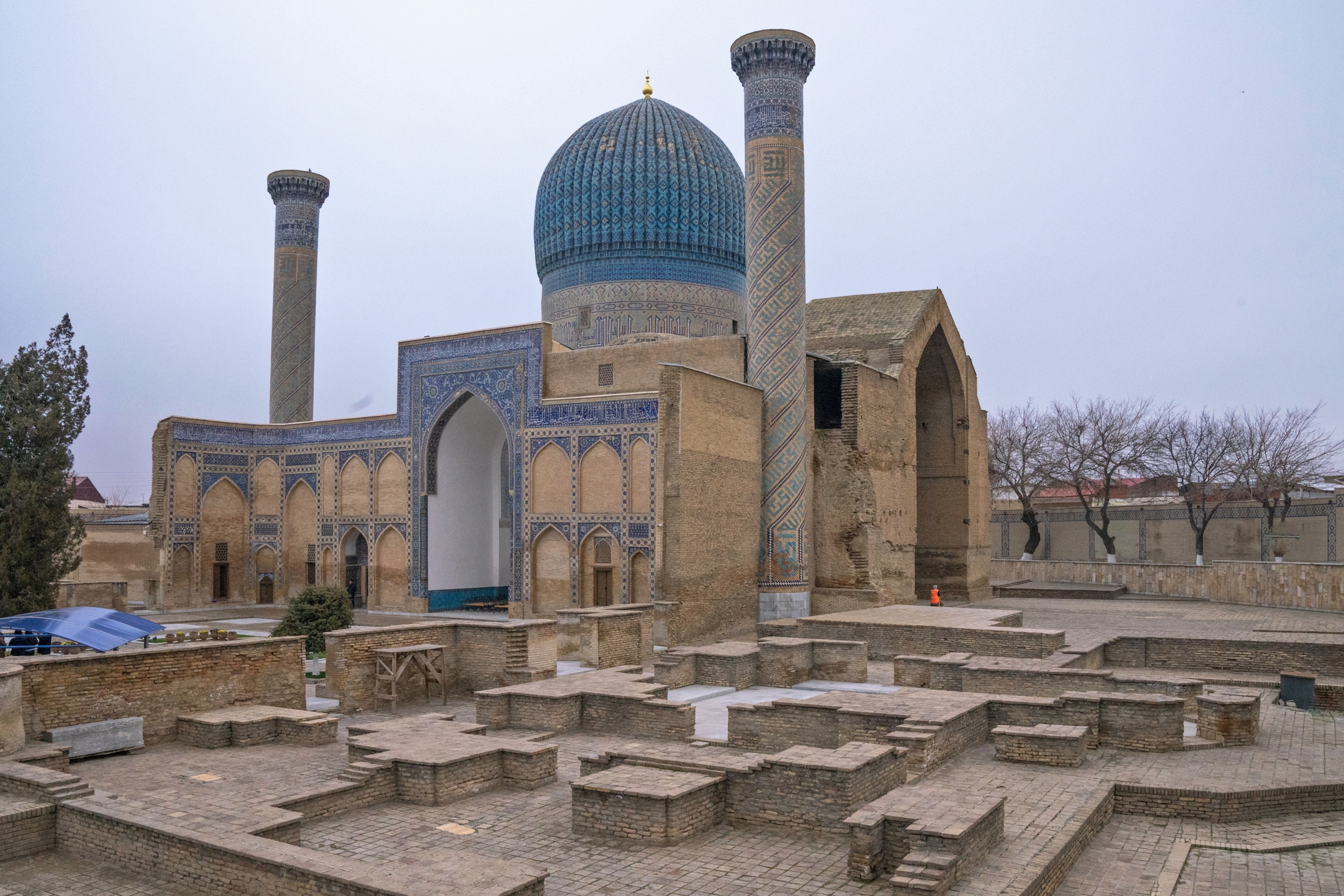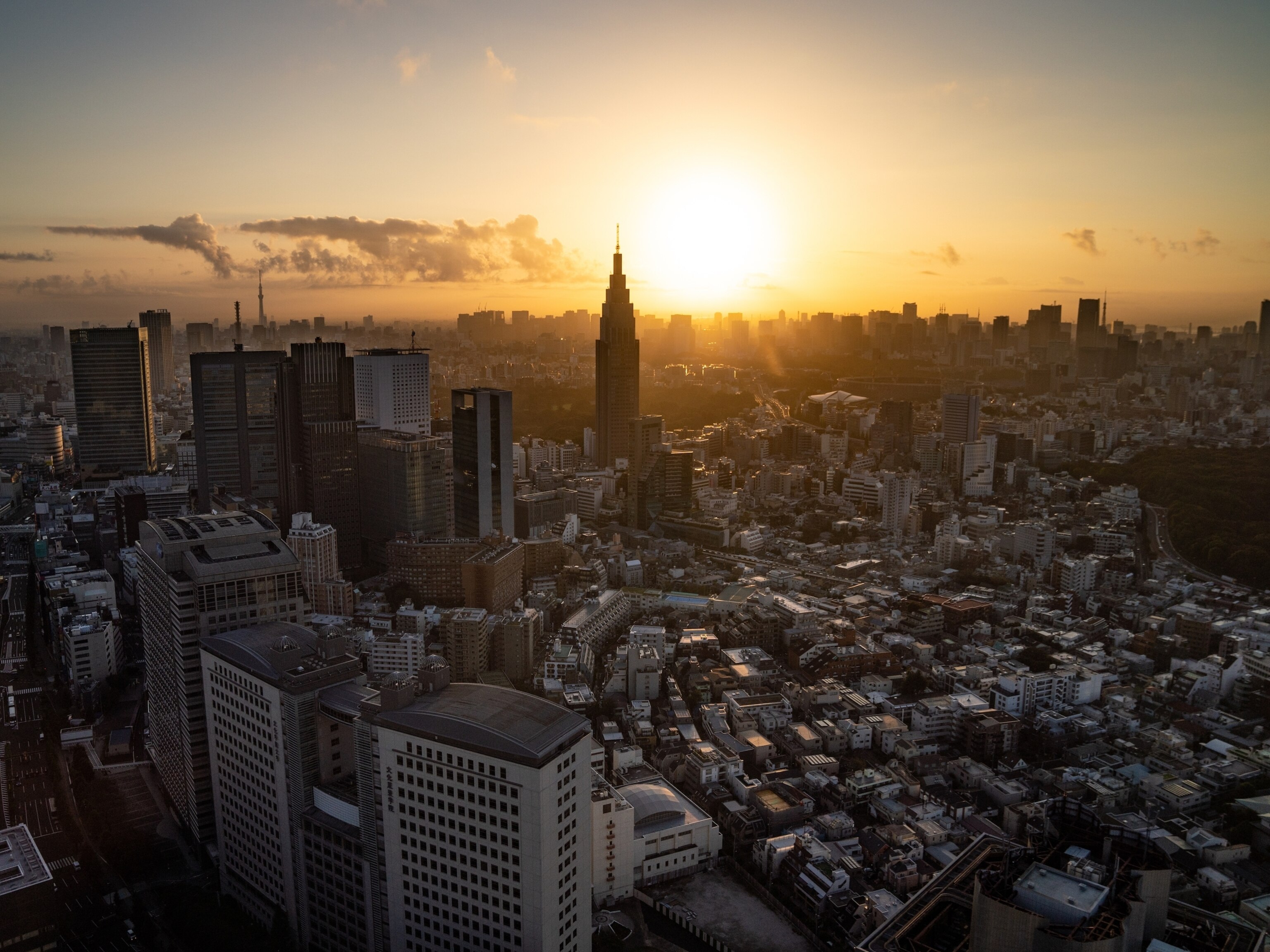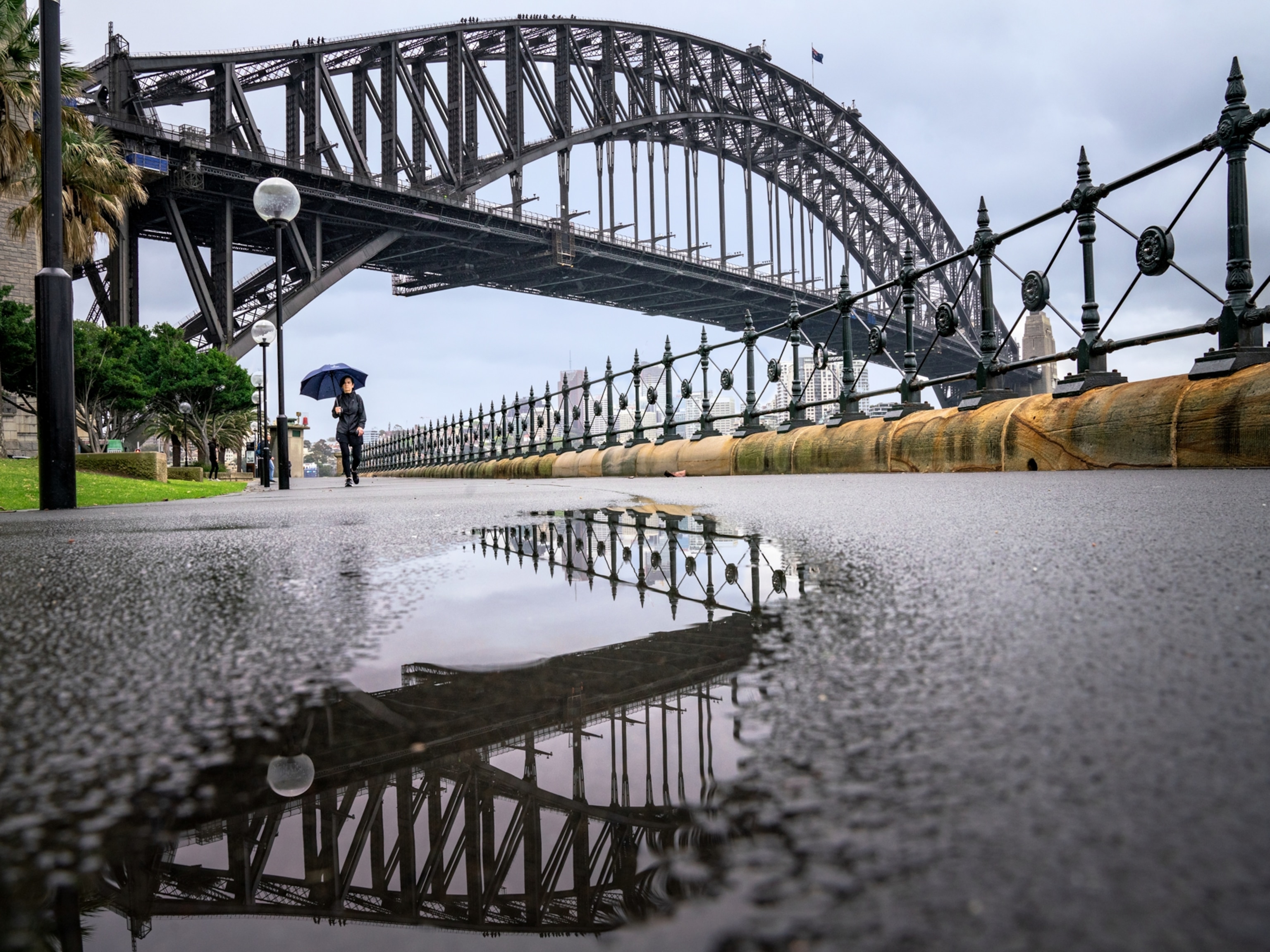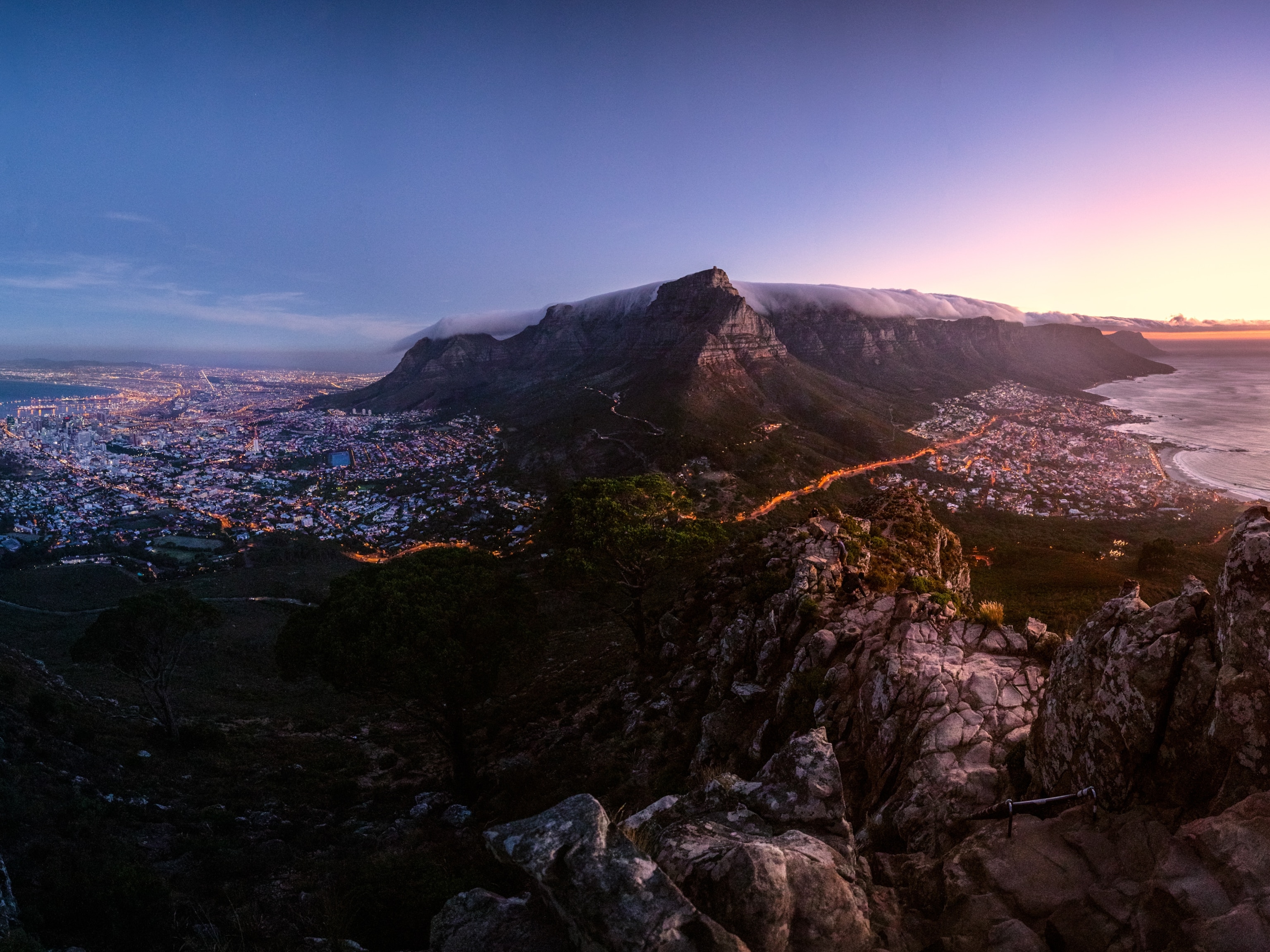
Into the blue of Uzbekistan
One man's artistic vision led him on a journey along the historic Silk Road to discover practical treasures hidden in plain sight.
Born in Chile and raised as a world traveler, the prominent designer Juan Pablo Molyneux now divides his time between homes and studios in both Paris and New York but spends much of his life on journeys of discovery. His work takes him around the globe, both to visit clients and to seek out unique architectural and decorative elements.
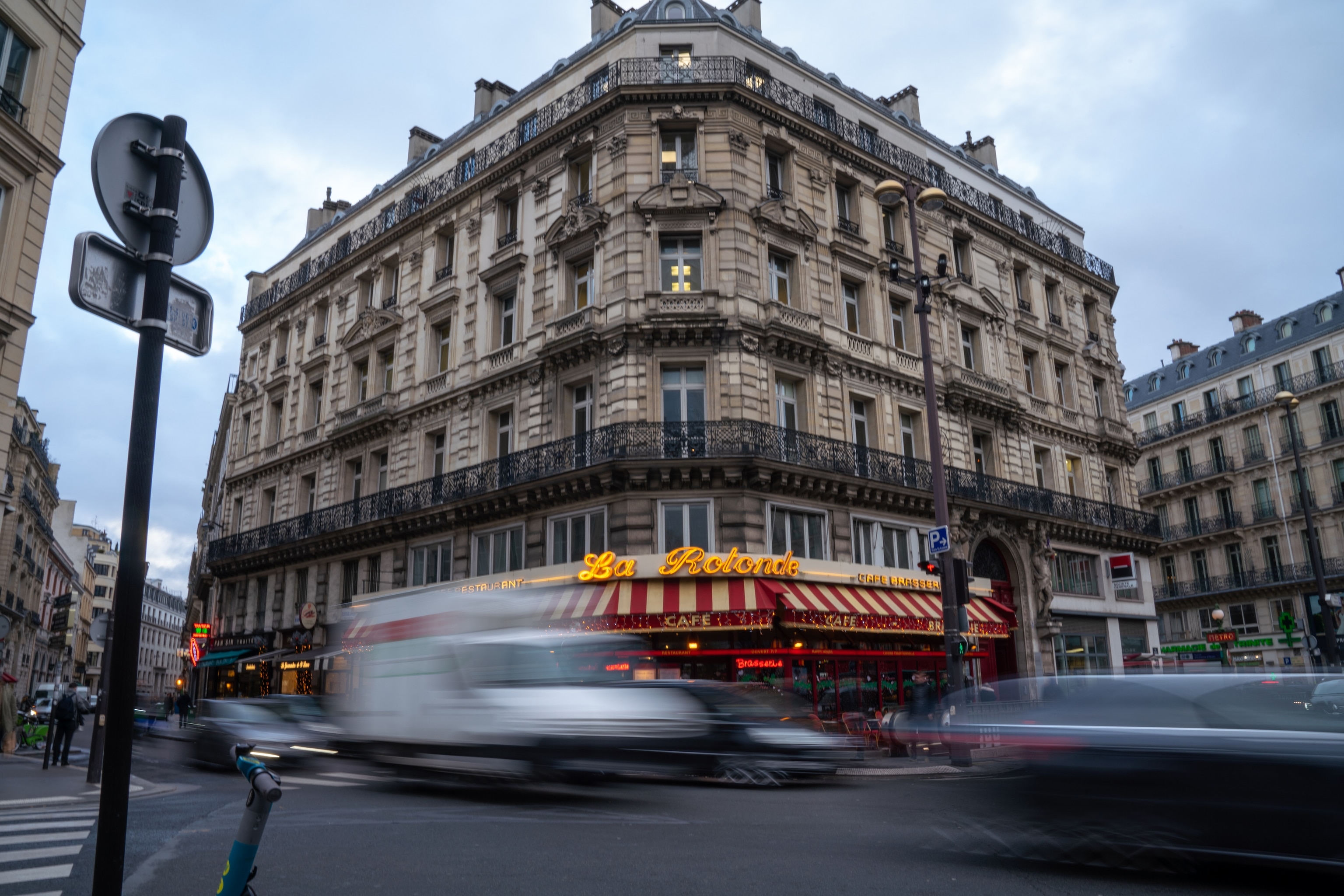
One such journey took him to Samarkand, Uzbekistan to discover the source of the unique turquoise tiles that adorn the region’s domes, mosques, and mausoleums. His journey took him deep into the culture of one of the few regions he’d never visited before, a place now very close to his heart.
Here is his story.

A Quest for Color
I see inspiration everywhere I look. This adventure started with a particular color that caught my eye in photographs of Islamic domes and mosques. I became obsessed with it. When I began working on designing a compound on a client’s private Caribbean island, the color of the water there brought those domes to mind. I wanted to see if I could replicate that special shade of blue on a cupola on the island to create the effect of it disappearing into the sea. I was only able to do that by traveling halfway around the world to find just the right tiles. But it all happened by chance.
In the midst of the Caribbean project, I was also working on a large project in Moscow for an Uzbek family. I adore Moscow’s ornate architecture and rich interiors, which inspire a lot of my work, but I actually love staying at Ararat Park Hyatt Moscow because it offers such a wonderful, contemporary contrast. I was delighted that this project also afforded me an opportunity to explore Uzbekistan.
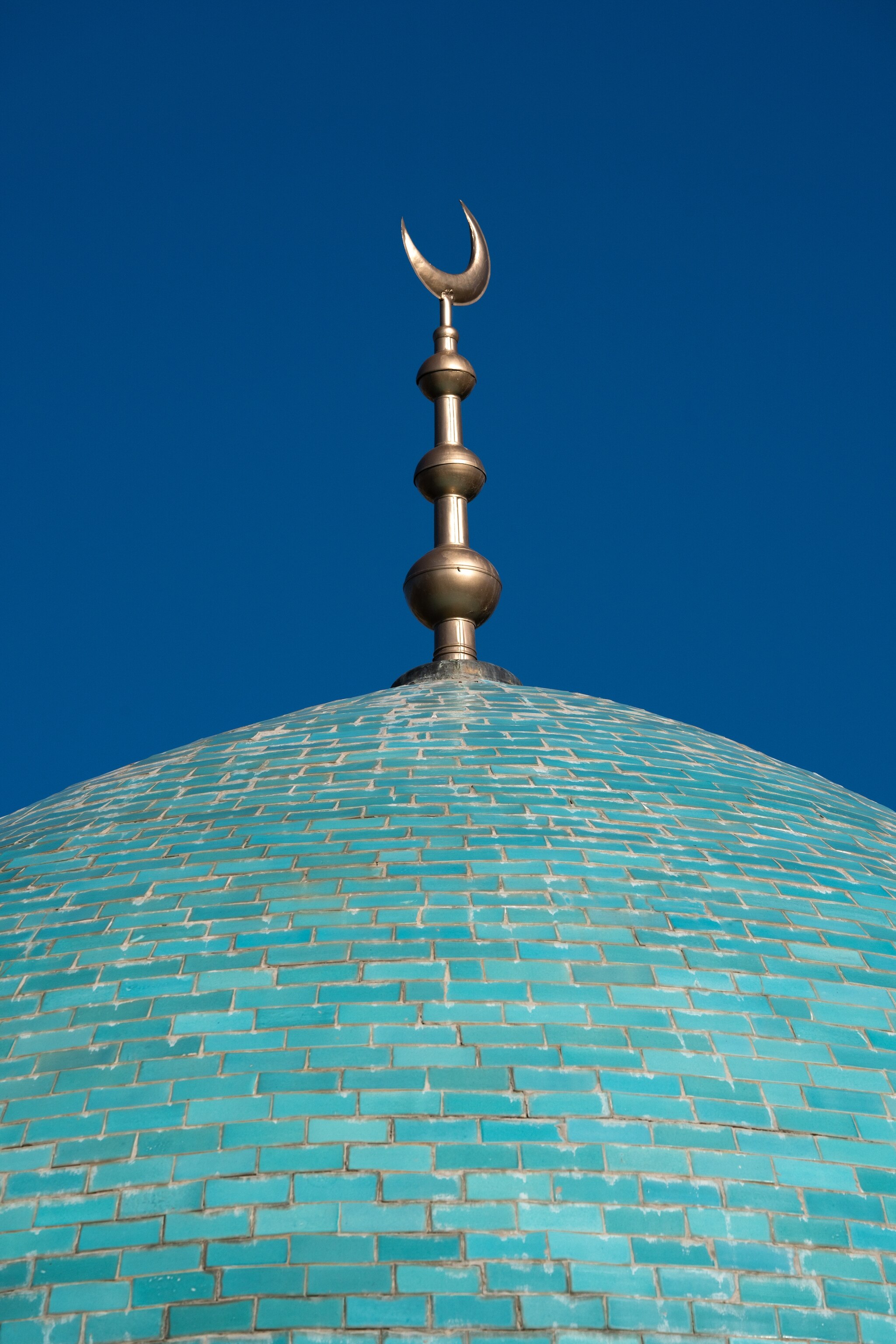
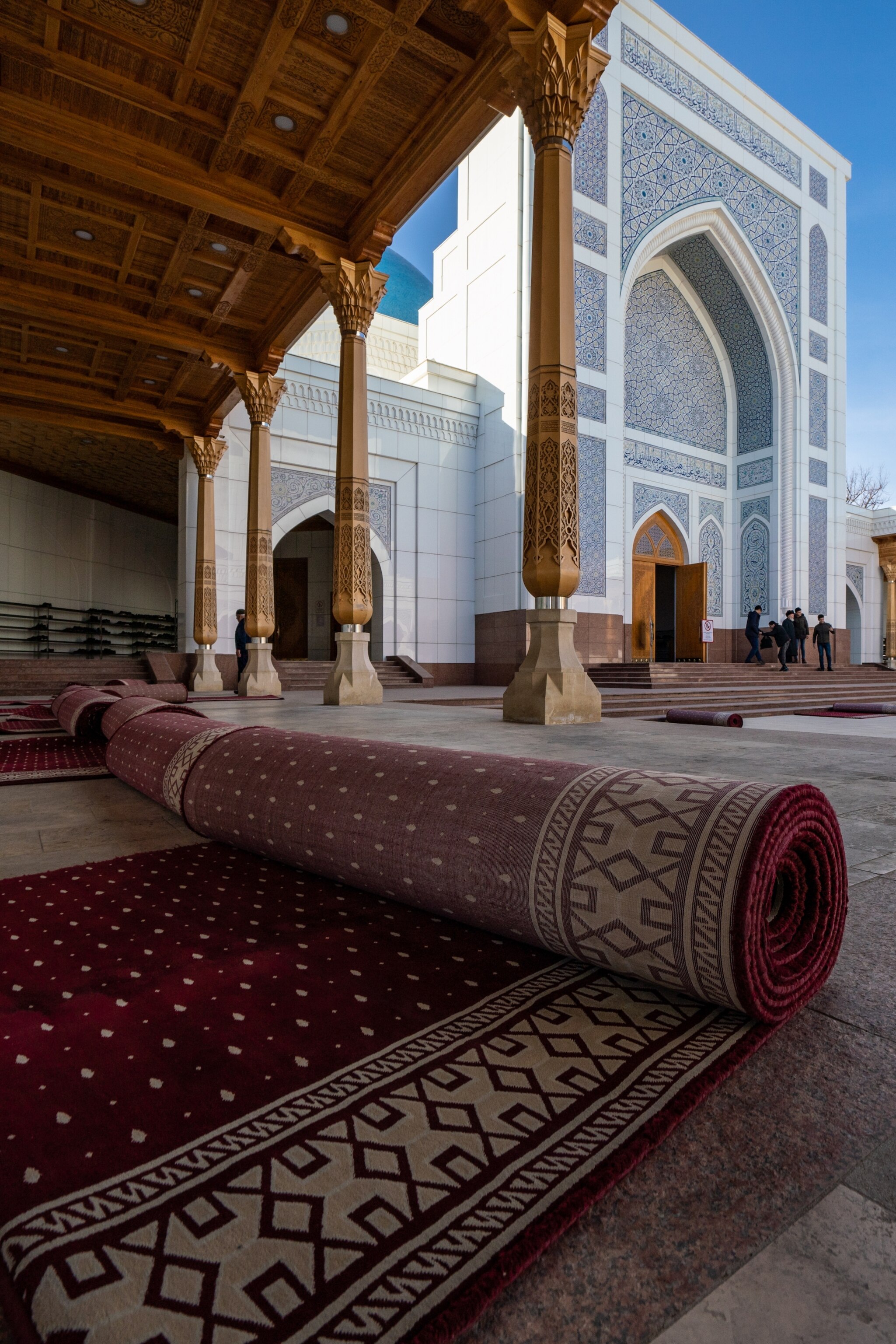
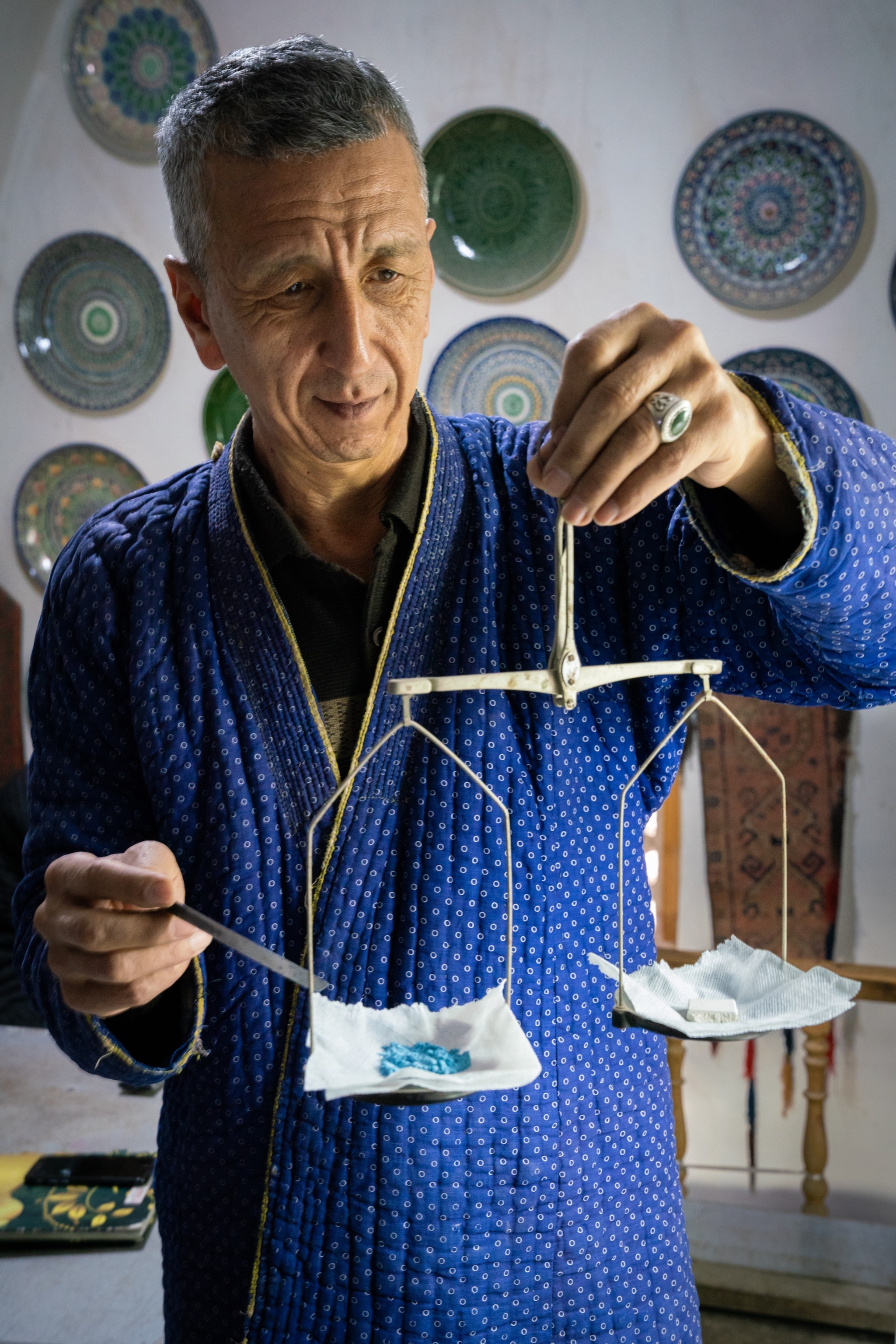
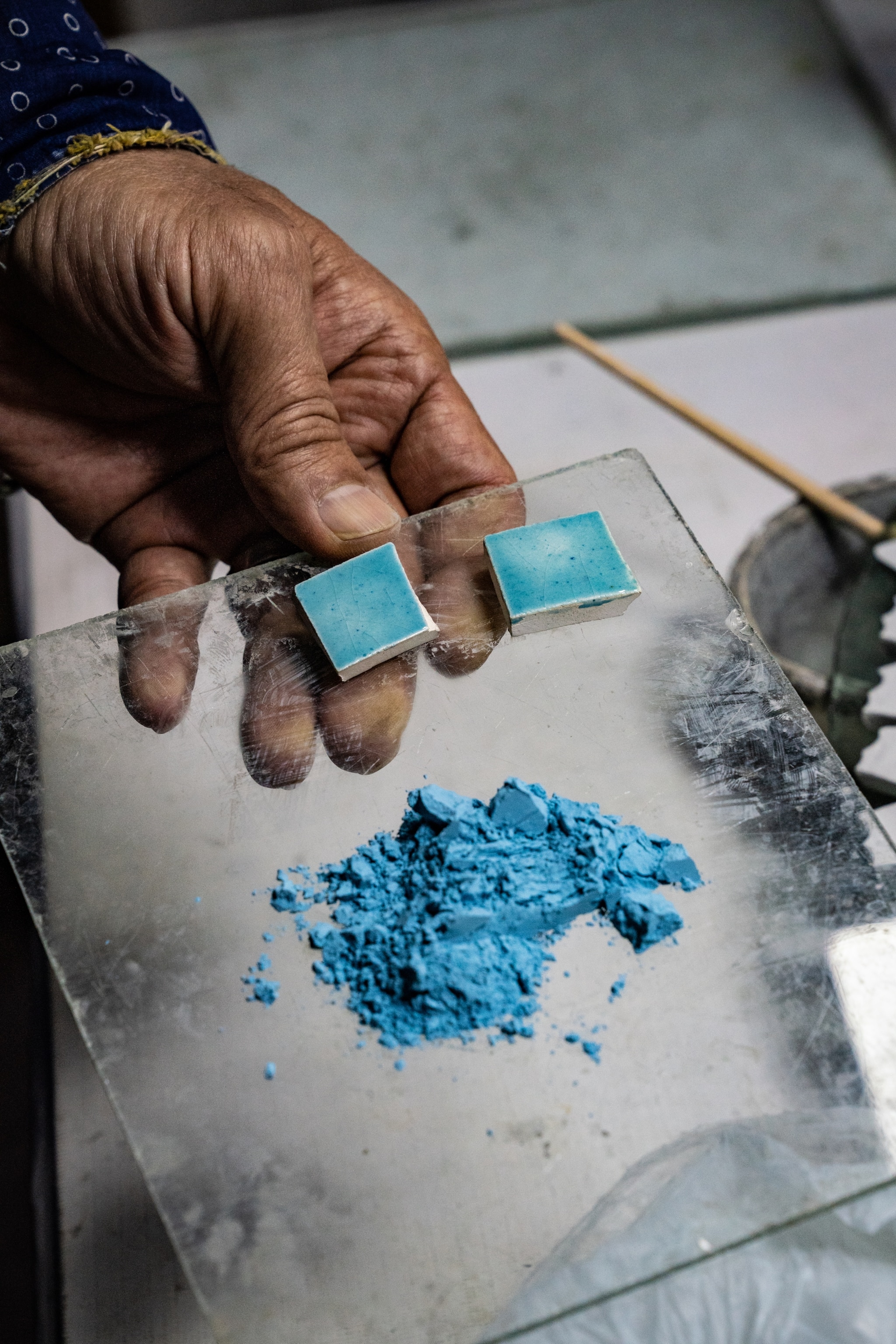
Living History Along the Silk Road
This family had invited me to their home in Tashkent, Uzbekistan because they wanted to use some materials made by Uzbek artists in their home in Moscow.
It’s such a fascinating region, only a short flight from Moscow. Tashkent itself has some very beautiful buildings and is famous for its plasterwork and woodwork. From there, it’s a fairly short drive south to Bukhara—known for its carpets—and Samarkand—a treasure trove of Islamic architecture—once, and for many centuries, a major stop along The Silk Road. It’s a crossroad between Europe and Asia, right in the center between the continents, but it’s not a place we’d now just be passing through, stop, and stay. Today, you really have to plan and go.
Connecting Through Color
During this trip, I wasn’t thinking about the Caribbean project at all. But the moment I arrived in Samarkand and saw these turquoise blue tiles everywhere I looked, it took me about 30 seconds to know what I wanted to do with that cupola. My mission had begun.
This beautiful color was especially concentrated in Samarkand’s remarkable cemeteries. Each tomb is like a mini mosque. Most have some element of that turquoise, many with perfect little domes. Walking through these monuments to remember the dead is really lively, all because of this vibrant color.
I soon found myself in Registan Square, where three amazing madrasahs sat in a perfect geometry that reminded me of Lincoln Center. Each structure is, itself, extraordinary and distinct, but the collection of, and relationship between, each piece of architecture is more magical than the sum of its parts.
These vibrant tiles appear at every turn in Samarkand and Tashkent.
There were a number of students around the madrasahs who were used to visitors seeking knowledge and wisdom, but nothing quite so esoteric yet practical as to where to buy tiles. They were amused but directed me to a wonderful workshop where these tiles had been made for centuries.
The workshop building itself was unremarkable, which, given the breathtaking architecture all over the region, is actually unusual. But when I stepped inside, it was magical. I was so taken with the energy of the people, their pride in their work, and the way they engaged with me about my dream of this color and its relationship to their city. In a way, they all happily became part of my dream.
Everyone was very affable and eager to show me the process of making the tiles. They ended up providing me with one large bag of tiles—exactly the color and finish that I wanted. For years, I dreamt of a project using tiles in this color. These are truly unique tiles that can be found nowhere else in the world.
But, like anything precious, they were not easy to get. When I arrived at customs in Tashkent, I was told that these tiles are considered a national treasure. They were confiscated, and I left the airport quite dismayed. But, after months of corresponding with government agencies, I was able to have the sample tiles sent to Paris and eventually order all the tiles I needed for the cupola.
Now there is a bit of Uzbekistan on a Caribbean island. Even places very distant and different from one another can be closely connected, sometimes through the subtlest details.
